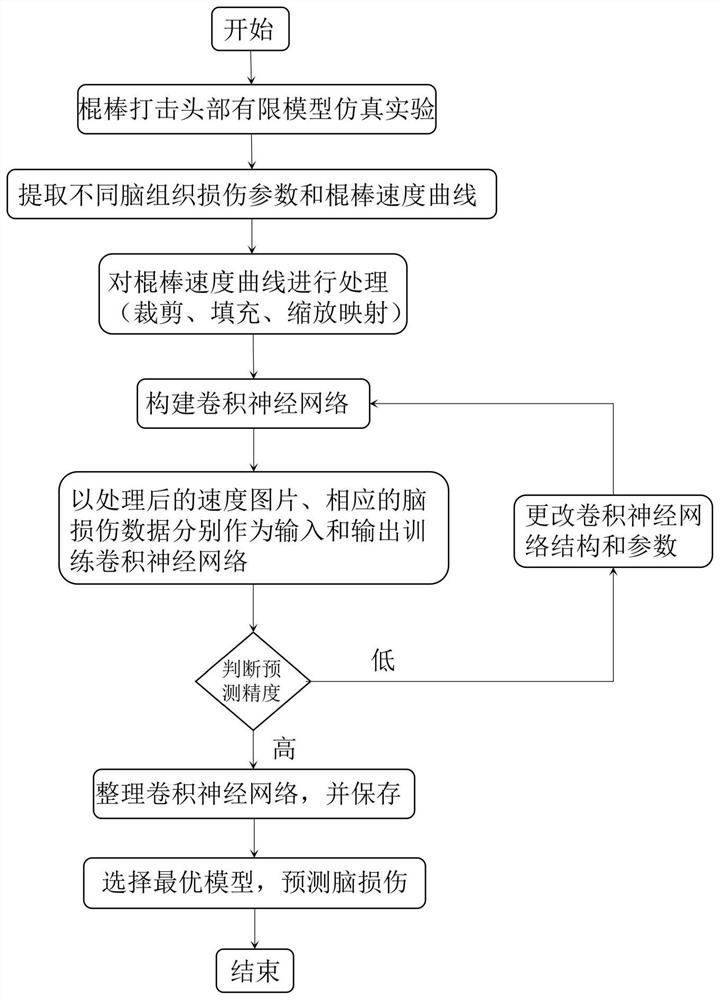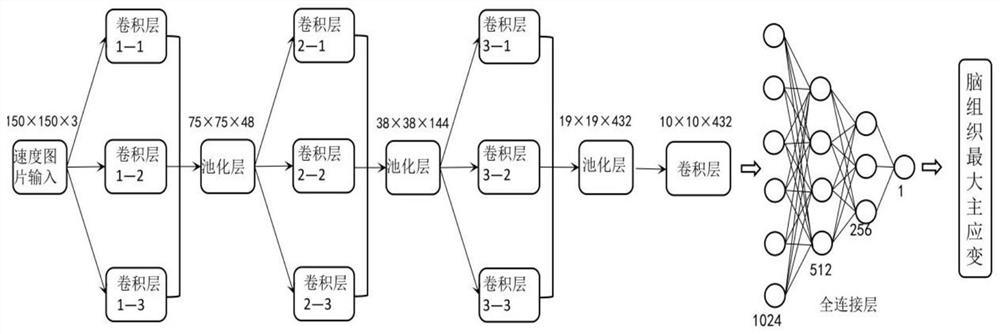Blunt device injury craniocerebral maximum principal strain prediction method and system based on convolutional neural network model
A technology of convolutional neural network and prediction method, which is applied in the field of rapid quantitative evaluation of craniocerebral injury caused by stick blows to the head, can solve the problems of reduced prediction accuracy of simplified models, inability to analyze and evaluate local brain tissue, etc. Accuracy, High Accuracy, Efficiency Enhanced Effects
- Summary
- Abstract
- Description
- Claims
- Application Information
AI Technical Summary
Problems solved by technology
Method used
Image
Examples
Embodiment
[0043] 1) Prediction of the maximum principal strain when a hardwood round stick with a length of 400mm and a diameter of 55mm strikes the left forehead at 10m / s.
[0044] Figure 4 The speed curve of the round stick along the X, Y, and Z directions is shown. After mapping and zooming and importing into the convolutional neural network selected above, the prediction results of the brain, cerebellum, and corpus callosum are 0.515, 0.532, and 0.395, respectively. The real values are 0.501, 0.529, 0.430 respectively.
[0045] 2) Prediction of the maximum principal strain when a round stick with a length of 400mm, a diameter of 40mm and made of cork strikes the left posterior parietal bone at 20m / s.
[0046] Figure 5 It shows the velocity curve of the round wooden stick along the X, Y, and Z directions. After mapping and zooming and importing into the convolutional neural network selected above, the prediction results of the brain, cerebellum, and corpus callosum are 0.682, 0...
PUM
 Login to View More
Login to View More Abstract
Description
Claims
Application Information
 Login to View More
Login to View More - R&D
- Intellectual Property
- Life Sciences
- Materials
- Tech Scout
- Unparalleled Data Quality
- Higher Quality Content
- 60% Fewer Hallucinations
Browse by: Latest US Patents, China's latest patents, Technical Efficacy Thesaurus, Application Domain, Technology Topic, Popular Technical Reports.
© 2025 PatSnap. All rights reserved.Legal|Privacy policy|Modern Slavery Act Transparency Statement|Sitemap|About US| Contact US: help@patsnap.com



